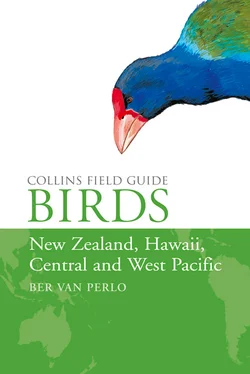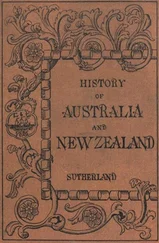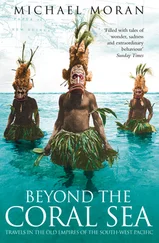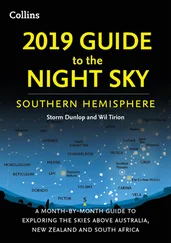It is said that the painting in my books is ‘a bit sketchy, somewhat fast and loose, not finely finished’. However, if you see a bird in the field you see its uniform-coloured plumage parts as a single surface; painting each individual feather will give too much information unless the feathers form a pattern. I also find it difficult to draw straight lines, for example, when depicting the parallel primaries in a folded wing, or perfect circles when forming an eye, but this does not prevent a species from being quickly recognised. To me, it is essential that one can see that my work is hand-painted; I love the magic of small spots and streaks, applied with skill and luck that create a shape of something that looks quite different in reality when seen from nearby.
In the introduction I have paid attention to landscape and habitats, specific to the area, that determine which bird species can be seen; that is also why information is given about plate tectonics, as one of the main landscape-forming factors.
An effort was made to update this book to 2009, but a recent record could not be inserted, namely that of American Avocet Recurvirostris avocetta on Maui, Hawaii. Very similar to 39.9 but with black mantle and white scapulars.
In June 2010, just before finishing writing this book, the fourth edition of the Checklist of the Birds of New Zealand was published by the Checklist Committee Ornithological Society of New Zealand. Only the common names from this publication could be incorporated in this book as explained in the first paragraph of ‘Systematics and Names’.
Symbols, Abbreviations and Glossary
Symbols
Habitat: a set of environmental factors that is preferred by a bird
Vocalisation
 Notes on range
Notes on range
Abbreviations
1st W – The plumage worn by a bird after moulting from juvenile plumage
2nd W – The plumage worn in the 2nd winter of a bird’s life
 – Male
– Male

 – Males
– Males
– Female
– Females
Ad. – Adult
Ads – Adults
Br – Breeding
N-br – Non-Breeding
C – Central
Cf. – Compare to
E – East(ern)
E. – Endemic
Esp. – Especially
Excl. – Excluding
Extr. – Extreme
I – Introduced
I. – Island
Irr – Irregular visitor
Is – Islands
Imm. – Immature
Imms – Immatures
Incl. – Including
Juv. – Juvenile
Juvs – Juveniles
L – Length in cm
N – North(ern), etc.; also in combination with E and W
NI – New Zealand’s North Island
Nom. – Nominate; the subspecies of a species that was the first described
Pl – Plate
R – Rare
S – South(ern)
Sec – Second or seconds
SI – New Zealand’s South Island
Ssp – Subspecies
Ssps – > 1 subspecies
Thr. – Throughout
V – Vagrant
W – Wingspan in cm; can also mean West(ern): depends on context
Countries
A.Sa – American Samoa
Co – Cook Islands
Fi – Fiji
FrPo – French Polynesia
Gu – Guam
Ha – Hawaii
Ki – Kiribati
Ma – Marshall Islands
Mi – Micronesia
Na – Nauru
Ni – Niue
NMa – Northern Marianas
NZ – New Zealand
Pa – Palau
Pi – Pitcairn Islands
Sa – Samoa
Tok – Tokelau
Ton – Tonga
Tu – Tuvalu
WaF – Wallis and Futuna
Glossary
Endemic A species that occurs only in an area with well-defined boundaries such as a continent, a country, an island or a habitat.
Forest A tall, multi-layered habitat in which high trees dominate the canopy, which is continuous and closed.
Gallery forest A riverine belt that is dominated by trees.
Jizz Typical silhouette and stance of a bird species.
Riverine belt Any growth along a river or stream that is higher and greener than the more distant surroundings.
Rufescent Tinged with red-rufous colour.
Savanna In this book: any (large) area with a continuous cover of (high) grasses, interrupted by shrub and (5–30%) tree canopy.
Second growth New natural forest developing in places where the original forest has disappeared.
Speculum Patch of colour on the wing contrasting with that of the rest of the wing.
Transient plumage Stage between Br and N-br plumages with traces of Br plumage still visable.
Woodland A habitat in which trees dominate, but the canopy is not closed.
Parts of a Bird
Introduction
Systematics and Names
In order to apply a uniform systematic approach and set of names that are valid in New Zealand, Hawaii, the USA, Asia, Europe and anywhere else, this book follows James F. Clements The Clements Checklist of the Birds of the World, 6th Edition (Helm, 2007) with regard to systematic status (species or subspecies) and names (scientific and English).
However, the best-known or most widely used common names used by New Zealanders and in Hawaii should not be neglected, if only to make it easier to find the birds of this book in regional publications. Therefore, alternative English names for species, advised by the Ornithological Society of New Zealand (OSNZ) for New Zealand and by the American Ornithological Union (AOU) for Hawaii, are indicated as insertions in the ‘Clements name’, preceded by ‘NZ’ or ‘AOU’ in superscript. For example:
the species indicated by number 20.9 (Plate 20, number 9) in this book is named the ‘INTERMEDIATE (or NZPlumed) EGRET’; the ‘Clements name’ is INTERMEDIATE EGRET, while the ‘OSNZ name’ is PLUMED EGRET;
number 28.1 in this book is named the ‘( NZAustralian) WHITE-EYED DUCK’; the ‘Clements name’ is WHITE-EYED DUCK and the ‘OSNZ name’ is AUSTRALIAN WHITE-EYED DUCK.
In a few cases, well-known alternative names are inserted in the ‘Clements names’, such as:
41.5 SNOWY (or Kentish) PLOVER
There are also many local names for subspecies, mentioned by the OSNZ and in use for those that occur in New Zealand; these names are given in numbered notes following the captions. An example is:
38.5 PURPLE SWAMPHEN44 Porphyrio porphyrio
ssp melanotus NZPukeko;
ssp pelewensis [Palau]
ssp samoensis [Samoa and Fiji]
In this example, the subspecies Pukeko occurs solely and exclusively in New Zealand (with the extra complication that it is treated by the OSNZ as Nominate of SOUTH-WEST PACIFIC SWAMPHEN NZPorphyrio melanotus). In the following example there are four subspecies found in New Zealand:
14.8 LITTLE SHEARWATER19 Puffinus assimilis
Nom. NZNorfolk Island Little Shearwater
ssp kermadecensis NZKermadec Little Shearwater
ssp haurakensis NZNorth Island Little Shearwater
ssp elegans NZSubantarctic Little Shearwater
Of these, elegans can also be seen outside the area covered by this book, but only in NZ it is known as Subantarctic Little Shearwater. (Note: The OSNZ has recently risen the Clements subspecies elegans to independent species NZSUBANTARCTIC LITTLE SHEARWATER Puffinus elegans.)
The French names are those of the Commission Internationale des noms français d’oiseaux (CINFO 1993).
The sequence of families in this book is more or less traditional, but strongly adapted in order to include up to a maximum of nine, rarely ten similar-looking species, sometimes from different families, in one plate.
Читать дальше

 Notes on range
Notes on range – Male
– Male










